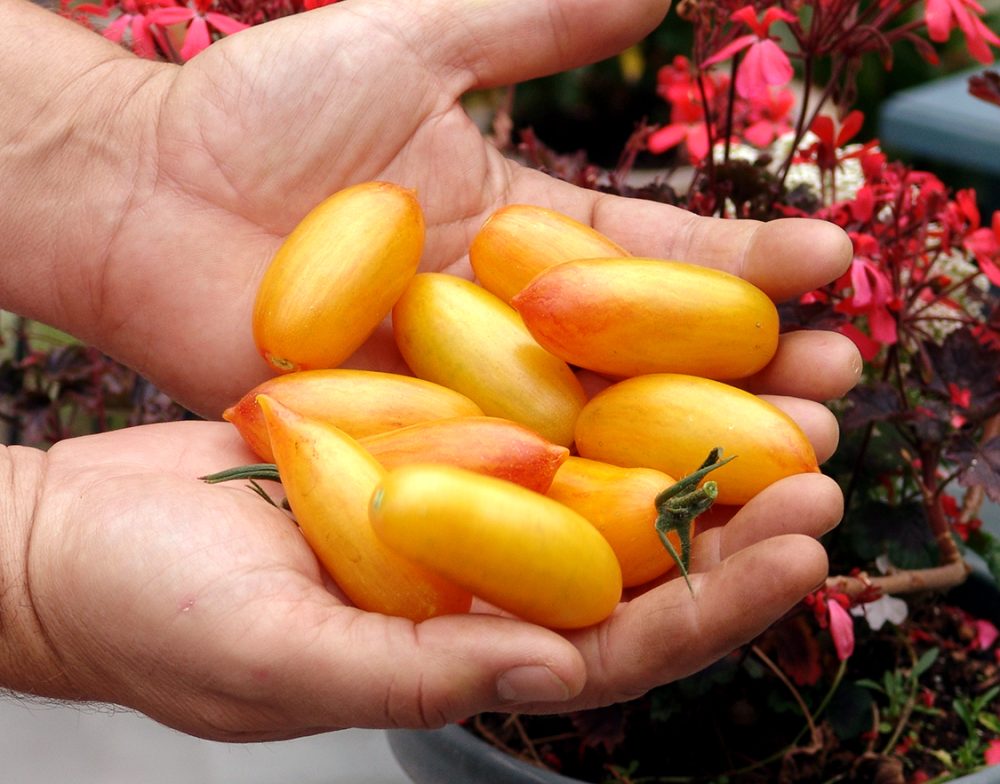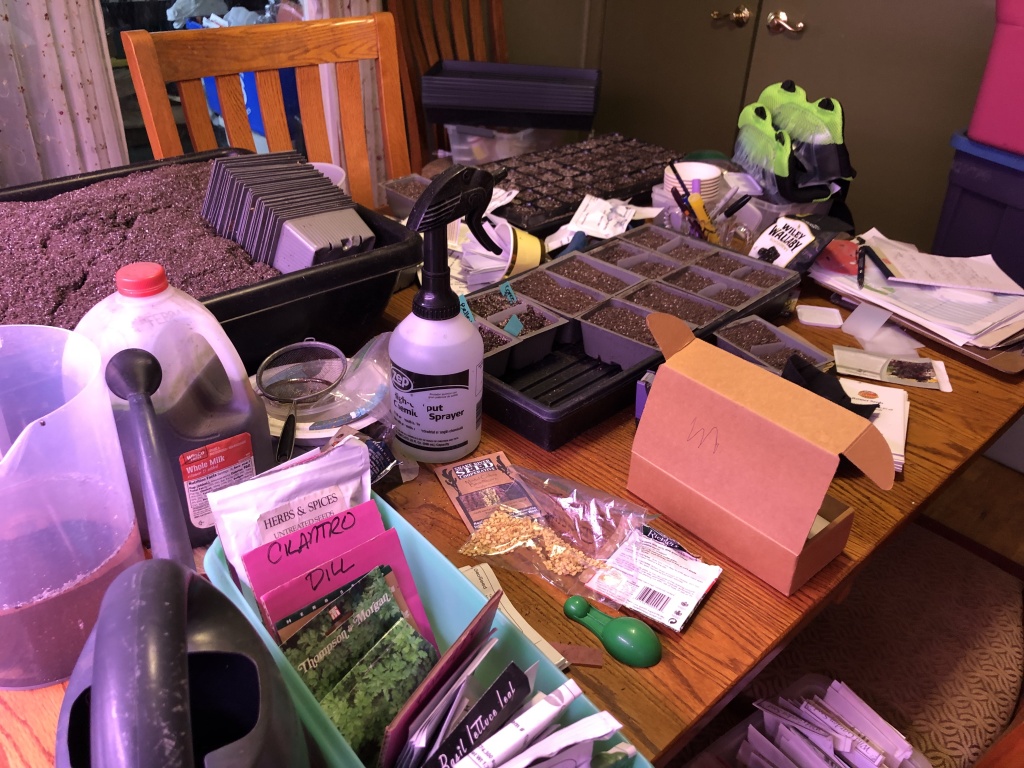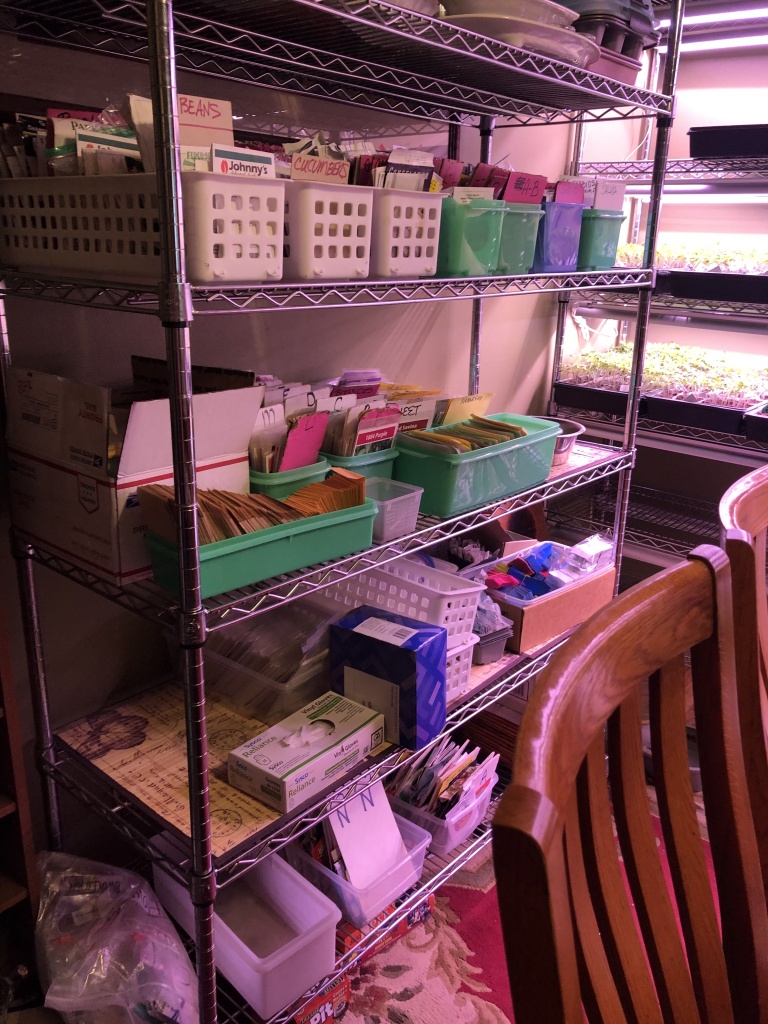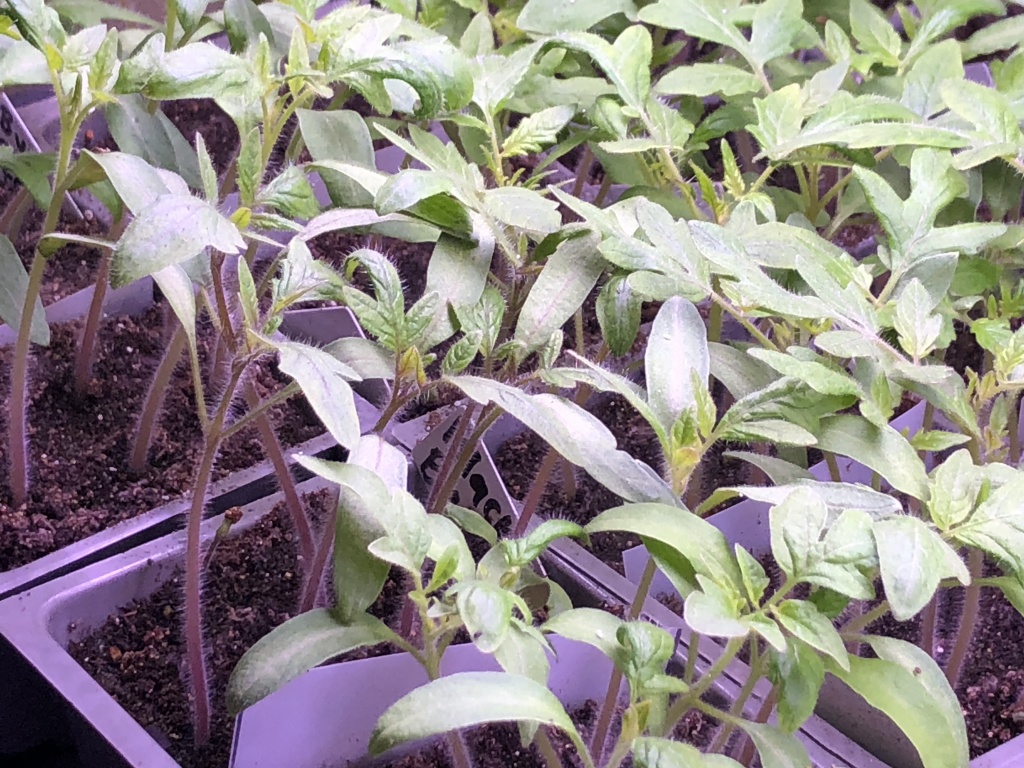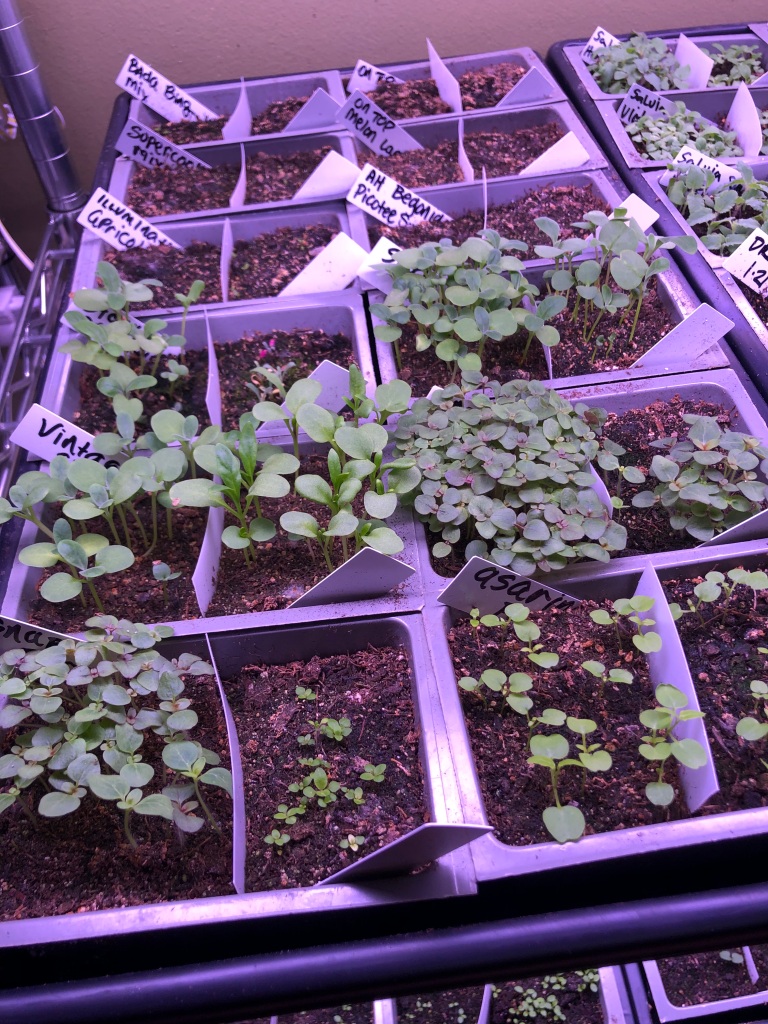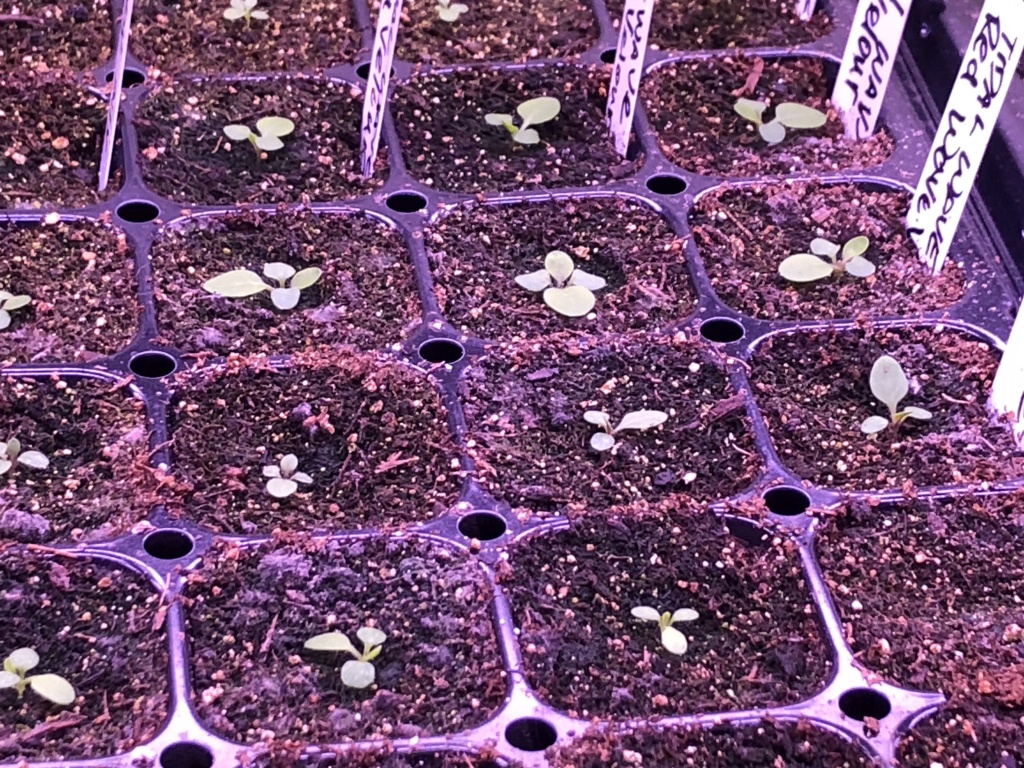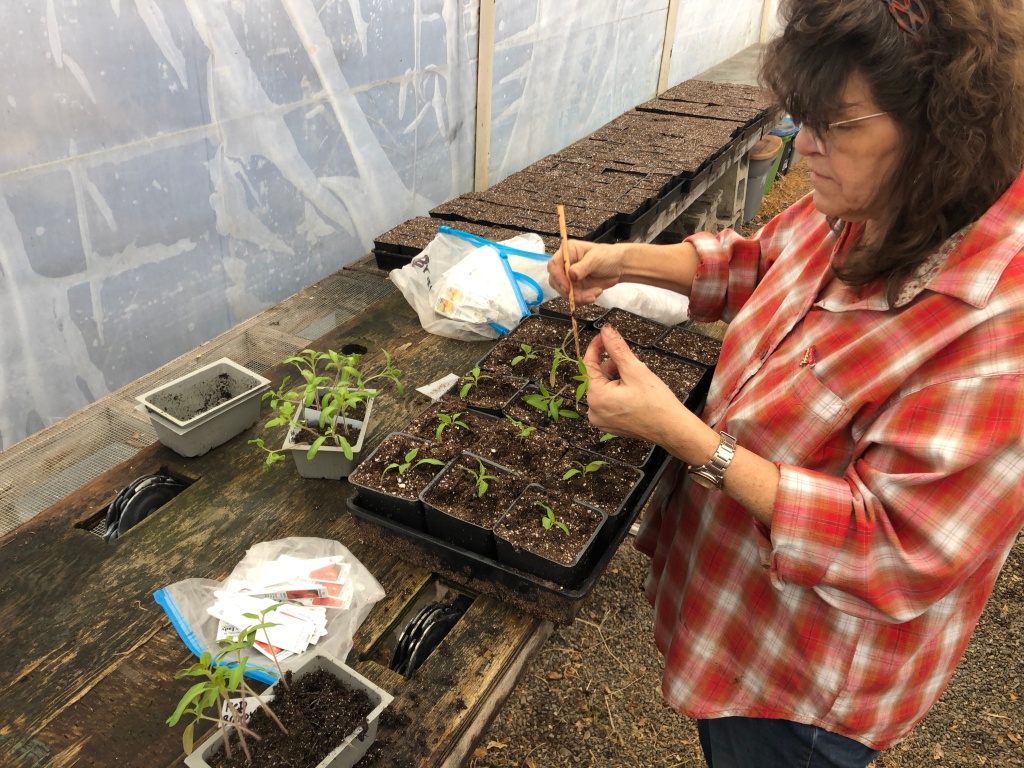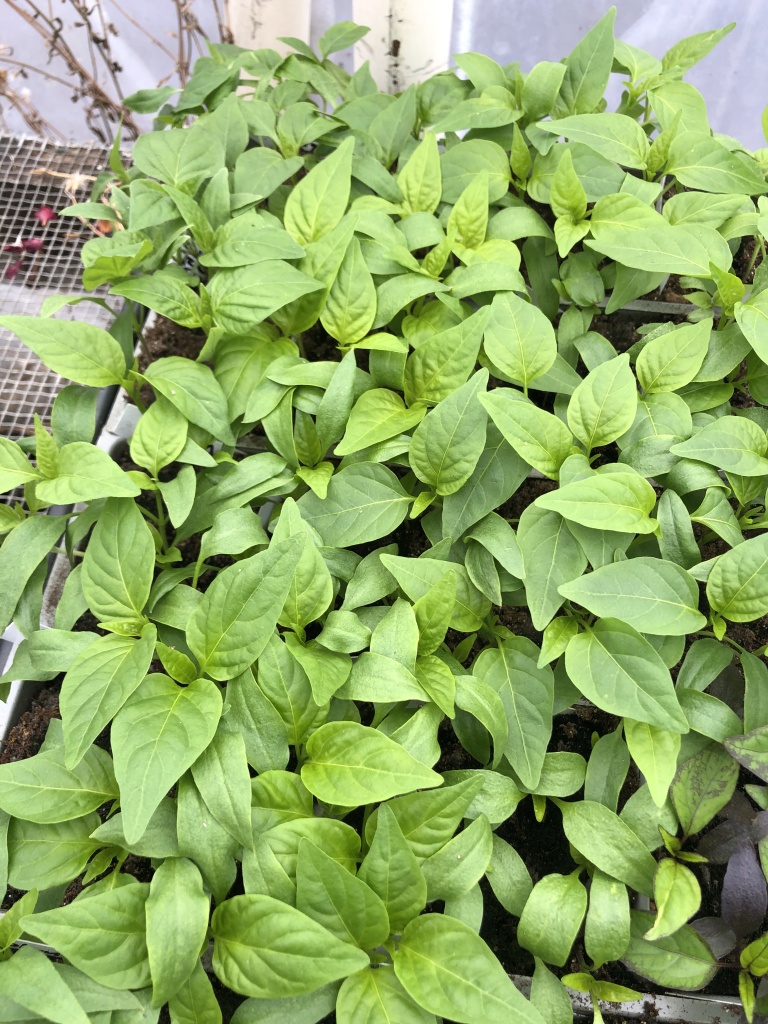
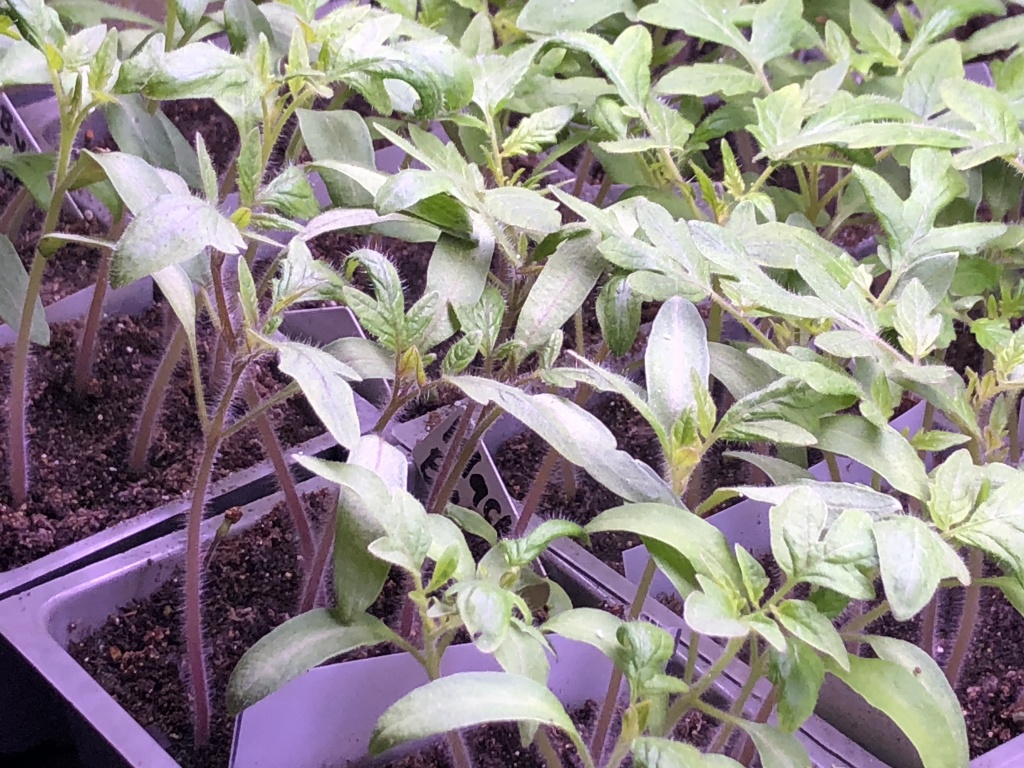
Tomatoes and peppers are the lifeblood of my business. With a few exceptions, the plants that are going into gallon pots are all safely ensconced in the greenhouse(s). The pictures above are of them before they entered into their relocation program. I have to say they are probably the most beautiful plants to date.
Someone asked me how long I have done this and it’s a good bet it’s been around 25 years. I started on the South Hill and participated in the fledgling (at that time) Garden Expo. The first year for me was held at the Spokane Community College. I think I had around 200 plants and I remember being inside the building next to the cafeteria. I was thinking I was all big and bad and had finally made it! One of these days I will share my story with you.
My point is, I’ve learned a few things in all those years. I think it shows in my plants, whether they are tomatoes, peppers flowers, or veggies. Inside the house, when they are in their infancy, they all need the same thing, water, food, warmth, and light. For most of those years, we started our plants in the dining room on Costco metal racks with two banks of fluorescent lights on each shelf. No longer a dining room for the next couple of months, it becomes the propagation room. Think messy and chaotic, germination mix on the floor, seed packets strewn everywhere. And it smells like dirt. Lovely, moist dirt. But I digress.
Last year we started using LED lights instead of fluorescent lights. I was noticing that the plants weren’t doing as well. You can’t tell by looking at the lights themselves but the light output decreases. You can see it in the plant growth. Plants don’t lie. If they are not happy, you can tell.
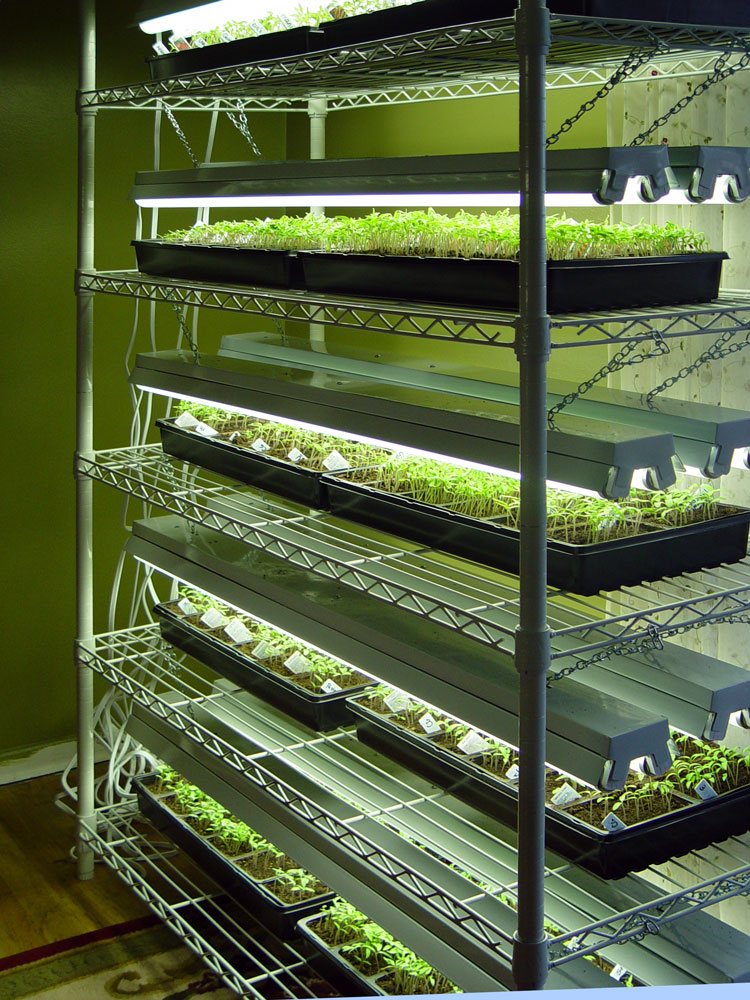
I was so pleased with the LEDs. My plants certainly seemed to respond. We hung one light bar in the middle of the shelf and two flats end to end on each rack. This year, we placed the LED light bars two on a shelf and placed four trays of seeds, side by side, on each shelf, instead of one light bar and only two trays. The lights hang above each side of the shelf. It gives us twice the space and as you can see from the pics above, they are loving it.
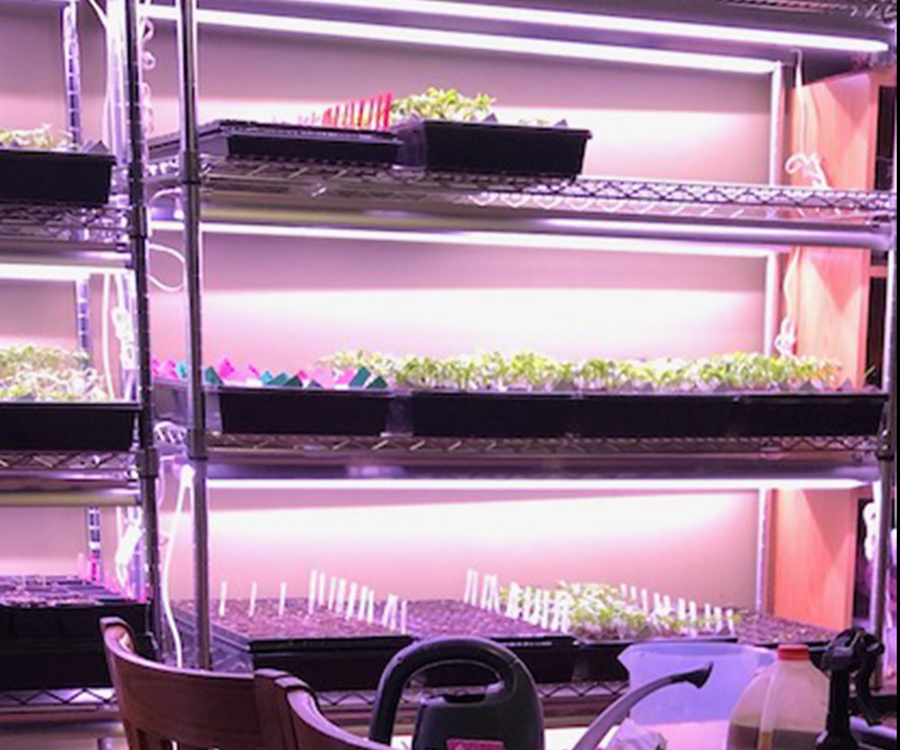
One other thing I wanted to share with you is that my body is getting back at me. Being a year older and doing a whole lot of sitting for the past 6 months has not been a good choice. My shoulders, back, hip, whew, you’d think that I decided to climb Mt. Everest. Without training. Or oxygen. I know that this too shall pass. Hopefully soon since I have so many other plants to transplant.

